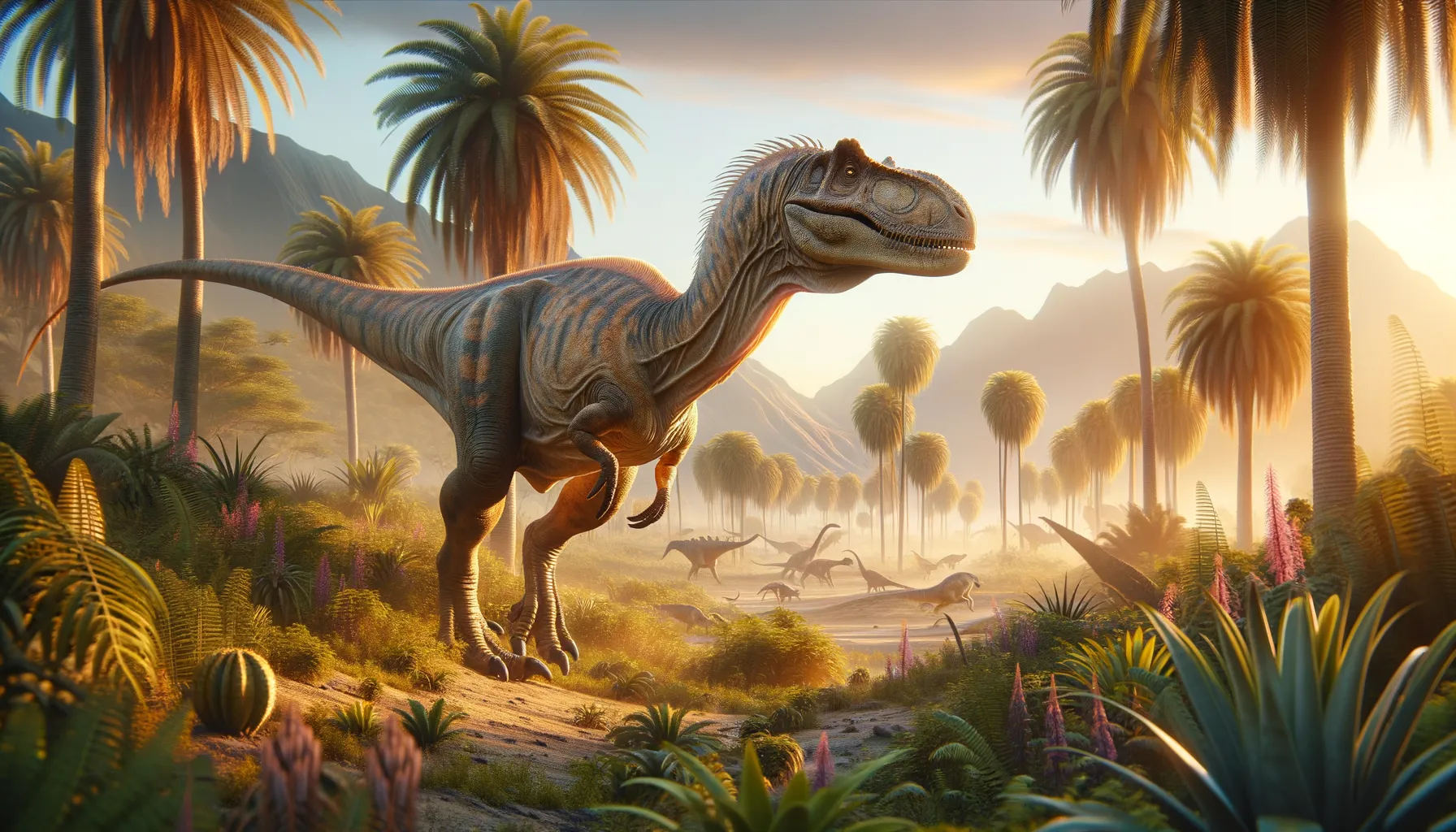
Bayannurosaurus
A forgotten giant of the ancient Cretaceous world.
Period
Cretaceous
Length
Reached lengths of up to 15 meters.
Height
Stood about 3 meters tall at the hips.
Weight
Weighed several tons.
Bayannurosaurus was a large, plant-eating dinosaur from the Cretaceous period. It belonged to a group known as hadrosaurids or duck-billed dinosaurs and roamed the regions that are now part of China. Its substantial size and herbivorous diet suggest it was a gentle giant of its time, likely traveling in herds for protection against predators. This dinosaur helps us understand the rich biodiversity of its era and the evolution of plant-eating dinosaurs.
Diet
Bayannurosaurus primarily consumed plant material, grazing on a variety of vegetation available in its environment. Its diet included leaves, twigs, and other plant matter, which it processed using its specialized beak.
Hunting
As a herbivore, Bayannurosaurus did not hunt. Instead, it foraged in the dense vegetation of its Cretaceous habitat. Gathering food was likely a communal activity, providing safety in numbers.
Environmental challenges
Bayannurosaurus faced challenges such as seasonal changes in climate, which affected the availability of food sources. Predatory threats from carnivorous dinosaurs also posed a danger, necessitating vigilance within its herds. Additionally, maintaining a stable body temperature in varying weather conditions was crucial for survival.
Speed
Moderate gait typical of large herbivores.
Lifespan
Estimated to live several decades.
First discovery
Discovered in Bayannur, Inner Mongolia, China.
Fun Facts
- Bayannurosaurus was a herbivorous dinosaur that lived during the Cretaceous period over 100 million years ago.
- It was discovered in the Inner Mongolia region of China, and its name is derived from the city of Bayannur where it was found.
- Bayannurosaurus belonged to the hadrosaur family, known for their duck-billed appearances.
- This dinosaur was quite large, reaching lengths of up to 9 meters (about 30 feet), making it one of the bigger plant-eaters of its time.
- Bayannurosaurus had strong jaws and numerous teeth, perfect for chewing tough and fibrous plants.
- Its fossils were first described in scientific literature in 2018, making it a relatively recent discovery in the paleontological world.
- The discovery of Bayannurosaurus helps scientists understand the diversity and distribution of dinosaurs in Asia during the Cretaceous period.
Growth and Development
The growth rate of Bayannurosaurus was typical of large dinosaurs, with juveniles growing rapidly to reduce vulnerability to predators. Skeletal remains suggest a gradual development, reaching full size over several years. Dinosaur osteology shows it likely had strong bones to support its massive body.
Habitat
Bayannurosaurus inhabited semi-arid regions with lush vegetation, providing ample food resources. The presence of rivers and lakes in its habitat suggests it had access to water for drinking and bathing. Its environment was likely shared with various other dinosaur species, including predators and smaller herbivores.
Interaction with other species
Bayannurosaurus interacted with other herbivorous dinosaurs, often forming mixed-species herds for mutual protection. Predators such as theropods were a constant threat, likely influencing its behavior to remain in groups. Its presence in the ecosystem contributed to the balance of plant-eating and meat-eating dinosaurs in its habitat.
Natural lifespan
The natural lifespan of Bayannurosaurus could reach up to 30 years.
Reproduction
Bayannurosaurus likely reproduced by laying eggs, with nests constructed in secure locations. Parental care, if practiced, would have involved nesting and potentially defending the eggs or young offspring. Insights from related species suggest a high rate of offspring mortality, balanced by the potential for numerous eggs per clutch.
Social behaviour
Bayannurosaurus exhibited social behavior typical of herd animals, moving together for greater protection. This social structure provided advantages against predators, facilitating communication and coordination among individuals. Vocalizations and body language likely played roles in maintaining group cohesion.
Fossil locations
Fossil remains of Bayannurosaurus have been found primarily in Inner Mongolia, China, providing critical insights into the dinosaur fauna of Asia during the Cretaceous. The Bayannur locality, from which its name is derived, offers a rich fossil record that includes many other contemporary species, shedding light on the ecological dynamics of its time.
